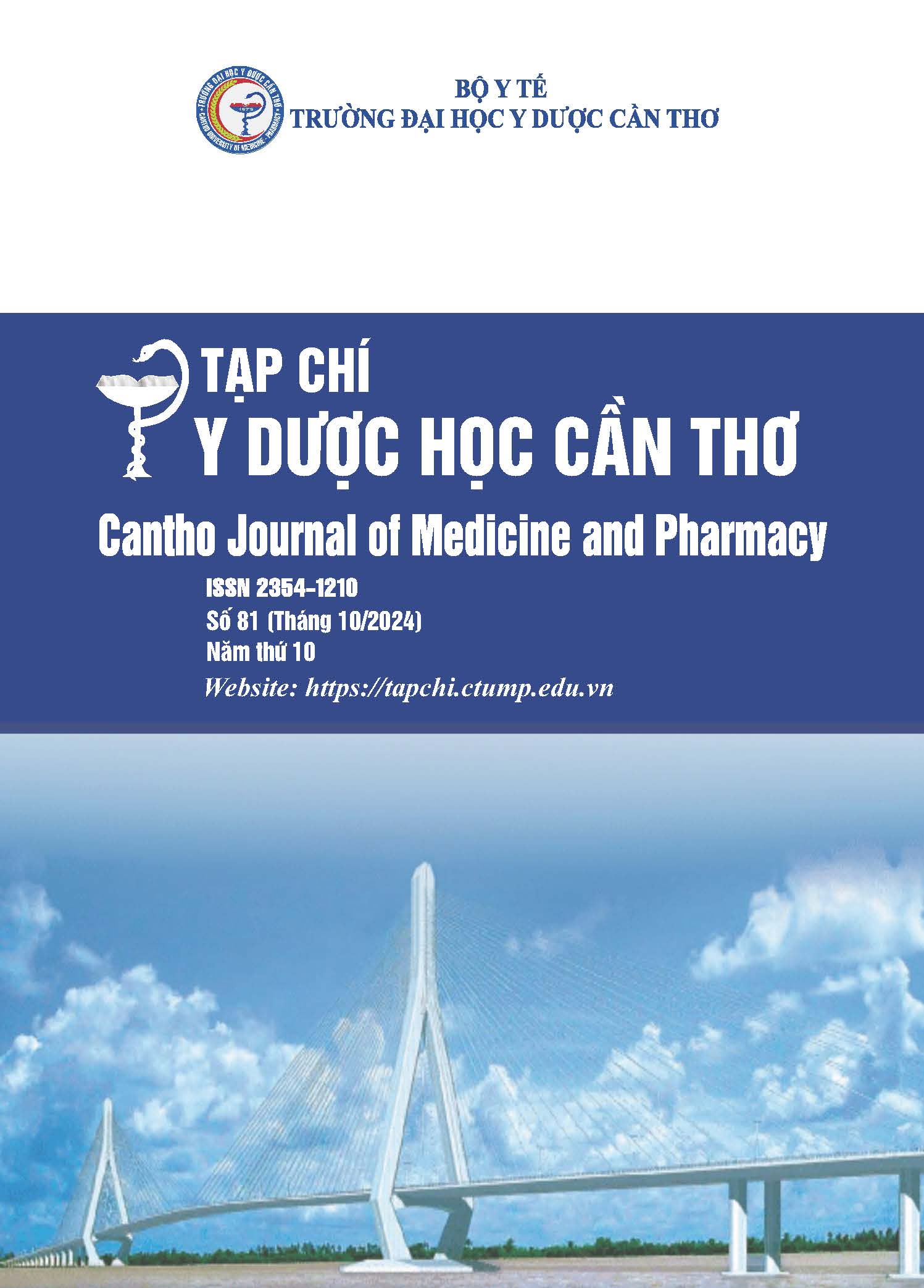RESULT OF VENTILATOR WEANING AT EMERGENCY – INTENSIVE CARE DEPARTMENT CAN THO UNIVERSITY OF MEDICINE AND PHARMACY HOSPITAL
Main Article Content
Abstract
Background: Mechanical ventilation is a basic emergency and critical care medicine technique using a mechanical device (ventilator) to support the respiratory process. Once the cause of respiratory failure has resolved, weaning from mechanical ventilation should be considered as soon as possible. Weaning from the ventilator is a great challenge for emergency and critical care doctors. Objectives: To determine the weaning results on ventilated patients in the Emergency – Intensive Care Department. Materials and methods: A prospective study on 38 ventilated patients at Can Tho University of Medicine and Pharmacy Hospital from 01/2023 to 03/2024. Results: The proportion of men and women was 50%. The average age was 73.79 ± 15.61, and the group over 80 years old accounted for 44.7%. The rate of successful weaning was 44.7%, and that of successful extubation group was 94.2%. Simple, difficult, and prolonged weaning groups had rates of 76.4%, 11.8%, and 11.8% respectively. Death or severe patients took the proportion of 57.9%. Pneumonia, accounting for 66.7%, was the main cause of ventilation in the weaning failure group. Conclusion:
The successful weaning rate is modest. The most common cause of ventilation in the group that failed to wean is pneumonia.
Article Details
Keywords
Weaning, Spontaneous Breathing Trial (SBT), Klebsiella pneumoniae
References
2. Trần Thế Bảo, Nguyễn Trung Kiên, Dương Thiện Phước. Thất bại với cai máy thở đơn giản và một số yếu tố liên quan tại Bệnh viện Đa khoa Trung ương Cần Thơ. Tạp chí Y Dược học Cần Thơ. 2020. 30, 202-206, https://tapchi.ctump.edu.vn/index.php/ctump/article/view/1568.
3. Pham T., Heunks L., Bellani G., Madotto F., et al. Weaning from mechanical ventilation in intensive care units across 50 countries (WEAN SAFE): a multicentre, prospective, observational cohort study. Lancet Respir Med. 2023. 11(5), 465-476, doi: 10.1016/S22132600(22)00449-0.
4. Thille A. W., Harrois A., Schortgen F., Brun-Buisson C., Brochard L. Outcomes of extubation failure in medical intensive care unit patients. Critical Care Medicine. 2011. 39(12), 2612-2618, doi: 10.1097/CCM.0b013e3182282a5a.
5. Sood S., Witt C. A. The Washington Manual of Critical Care 3rd Edition. Wolters Kluwer. 2018. 84-87.
6. Zein H., Baratloo A., Negida A., Safari S. Ventilator Weaning and Spontaneous Breathing Trials: An Educational Review. Emerg (Tehran). 2016. 4(2), 65-71.
7. Boles J. M., Bion J. F., Connors A. F., et al. Weaning from mechanical ventilation. Eur Respir J. 2007. 29(5), 1033-1056, doi: 10.1183/09031936.00010206.
8. Saiphoklang N., Auttajaroon J. Incidence and outcome of weaning from mechanical ventilation in medical wards at Thammasat University Hospital. PLOS ONE. 2018. 13(10), e0205106, https://doi.org/10.1371/journal.pone.0205106.
9. Trần Quốc Minh, Lê Thị Diễm Tuyết. Thực trạng cai thở máy và một số yếu tố liên quan đến cai thở máy kéo dài tại Khoa Hồi sức tích cực Bệnh viện Bạch Mai. Tạp chí Y học Việt Nam. 2022. 510(1), 189-193, https://doi.org/10.51298/vmj.v510i1.1928.
10. Nguyễn Đức Lịch, Đỗ Ngọc Sơn. Kết quả cai thở máy của phương thức thông khí thích ứng ở bệnh nhân đợt cấp bệnh phổi tắc nghẽn mạn tính. Tạp chí Y học Việt Nam. 2021. 507(2), 87-91, https://doi.org/10.51298/vmj.v507i2.1407.


